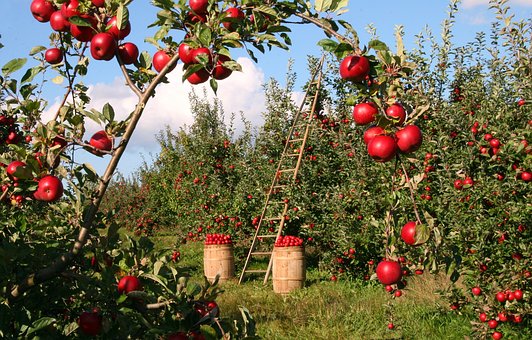Messenger god. Mayan (classical Mesoamerica) [Mexico]. According to tradition, when the god HACHACYUM decides to send rain he directs Hahana Ku to visit the black powder maker MENZABAC. Hahana Ku buys only a small quantity, against the wishes of the vendor.
Tag: when the
Mabon Background
Background:
Mabon marks the Second Harvest, the end of the grain harvest (which begun at Lughnasadh), and rests on the Autumn Equinox. The Equinox mirrors dwindling of life (and eventual progression to rebirth), as well as the struggle for balance; day and night are equal for a single day. The pagans of old didn’t have the ability to determine astrological positions as we do today. The Europeans, therefore, celebrated this Sabbat on September 25th; actually. The Celts marked their days from sundown to sundown, so the Mabon celebration actually started on the sundown of our September 24th. Today, with the help of our technology, we can calculate the exact day of the Equinox; the date when the sun enters the sign of Libra, the Balanced Scales, which appropriately fits the Equinox. In the Wiccan tradition we celebrate from sundown of the 21st to sundown of the 22nd. September 25th is a medieval holiday which the Church Christianized under the label of “Michaelmas,” a feast in honor of the Archangel Michael. It is thought that the Roman Catholic Church at some point considered assigning the quarter dates to the four Archangels, since they had assigned the cross quarters to the four gospel-writers. Making the Vernel Equinox a holiday called “Gabrielmas” was taken into consideration in honor of the angel Gabriel’s announcement to Mary on Lady Day. This Sabbat can also be known as: the Second Harvest Festival, Feast of Avalon, Cornucopia, Wine Harvest, the Fall Equinox, Harvest Home, the Autumnal (or Autumn) Equinox, Festival of Dionysus, Alban Elfed (Caledonii, Druidic), Winter Finding (Teutonic), or Equinozio di Autunno (Strega). The full moon closest to the Autumn Equinox is called the Harvest Moon, and farmers would harvest their corps by this moonlight as part of the Second Harvest celebration.
Dangers to Meditation
By Bhikkhu Khantipalo
While the number of ways a meditator may go astray is legion, the few mentioned below deserve a special mention due to their common occurrence. First, a danger that cannot be stressed enough is the lack of right motivation for the practice of meditation. When the Eightfold Path is described, in its “wisdom” section, standing next to the (at first) intellectual right understanding, comes right motivation, thus emphasizing that the emotional roots underlying practice of the Way must be skillful ones: those connected with renunciation (non-greed), goodwill (non-hatred) and non-violence are mentioned. If one approaches Buddhist meditation with neither right understanding regarding dukkha and its cessation, nor with right motives, then one’s meditation is liable to seriously astray.
Continue reading “Dangers to Meditation”
Tuberculinum
by Anja Heij
Tuberculinum is made of pus from a tubercular abscess. Although this does not sound very friendly it is a great and important medicine. It is used when there is a history of tuberculosis in the family, in the first stadium of tuberculosis in a patient, or when someone suffers from regularly ailments from the bronchial tubes (like asthma, chronic bronchitis, chronic colds or flues, or non-recovery from pneumonia). But: also when the symptoms of a person match with the image of this remedy.




